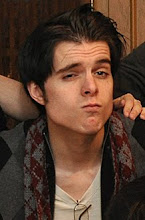Aesthetic choices in both shows are clear from the standpoint of its message. In Clarissa, Melissa Joan Hart's character is often dressed in outlandish but nonetheless 'cool' clothing almost every episode. At once this delivers two messages, the first being that girls do not have to conform to the meek and demure look that has traditionally represented more regressive female assumptions. Secondly, Clarissa's room is very 'rebelliously' decorated with hubcaps and a lizard in a kiddie pool. Her room is an extension of her character description and it also subverts traditional expectations of lacy, pink, and soft stereotypes that would normally crop up in television. On As Told By Ginger, the real defining quality I noted was that Ginger and her friends are unabashedly the popular 'middle class'. They are not the lauded beauties of their grade, but they are not made fun of for being ugly. This is played upon in the episode I watched (1x09, I believe) in that being this 'plain' social creature, Ginger is almost worse off than in one of the two extremes. Both her and her friends are drawn in a very plain way. Their look is almost quirky, but nonetheless very indicative of a 12 year old girl. The advantage to this portrayal both socially and physically serves to underline the message that is directed squarely at girls in the 'real world' -- that even stars of their own shows are sometimes struggling to get by in the social 'middle'. The question here is whether the presentation of these elements is undermined by the fact that they are products of traditional TV molds.
The answer here is complex. On the one hand, it is necessary to cede the point that because there have been innumerable sitcoms and cartoons through the life of TV; the impact of the progressive themes of both shows may be dampened. Viewers who simply tune in to seek entertainment may not realize that they are seeing something that is subversive in a very forward and positive way. Almost on that same token though, the question of presentational methods of feminism arise. To suggest that because the messages are not overtly addressed is a failure on the part of their deliverance seems to ignore the beneficial side effects of subconscious exposure. While in some cases this may certainly not be the case, children who grow up exposed to a steady stream of quality and (most importantly) entertaining female-centric television may indeed be pre-emptively indoctrinated to the pitfalls of misogyny. Is it necessarily a bad thing that a character like Clarissa or Ginger are viewed by the audience as simply 'the main character'? Is it not counter intuitive that in a movement dedicated to equality between genders, that the main concern is that the female element of a TV show is not being singled out effectively? The idea that a whole generation of children can grow up with the notion that females can be intriguing and fascinating protagonists worthy of focus as an afterthought is almost more powerful than a generation wherein that idea is forcibly 'taught'.
Of course, it is certainly plausible that a less overt method of delivery can result in a longer gestation of total equality. The issue here is that the definition of equality may never be universally agreed upon. While it is clear that women in television have made gigantic strides, the real question becomes when is enough enough? When is it finally a non-issue -- something I think is the most effective end result for prominent social movements such as racism and feminism? The answer is relative, so I cannot say specifically. The juxtaposition of the progressive elements of both Clarissa and ATBG with traditional media deliveries seems to me to be an effective method. Seeing that these types of characters (ie: female) can succeed overwhelmingly in what has otherwise been a male dominated format is more powerful than if they succeed in a format created specifically for them. This may be too hyperbolic a comparison, but I think of Native Americans in the United States. Having been marginalized for much of the last century and a half, one could argue that the fact these peoples have been given reservations of land is not a fitting solution to the perceived unfairness of their situation. Conversely then, how is it not viewed half as negatively when the idea that feminism needs its own special form of delivery is offered? Are channels such as Lifetime or Oxygen really progressive, or are they simply a means to marginalize?
In the end, I feel that the problem with feminism today is that there is not a clear monster to slay. It would be unwise to claim that women do not still have to struggle when it comes to certain gender differences, but to attack these as gigantic and warring struggles is ludicrous. Shows like Clarissa and ATBG, in my mind, approach those final barriers in a logical way -- on the traditional turf of the established system; subverting the expectations it holds and positing its power in terms anyone can understand. It may not be the thunderous announcement of equality some would want, but it's quite possibly the best


No comments:
Post a Comment